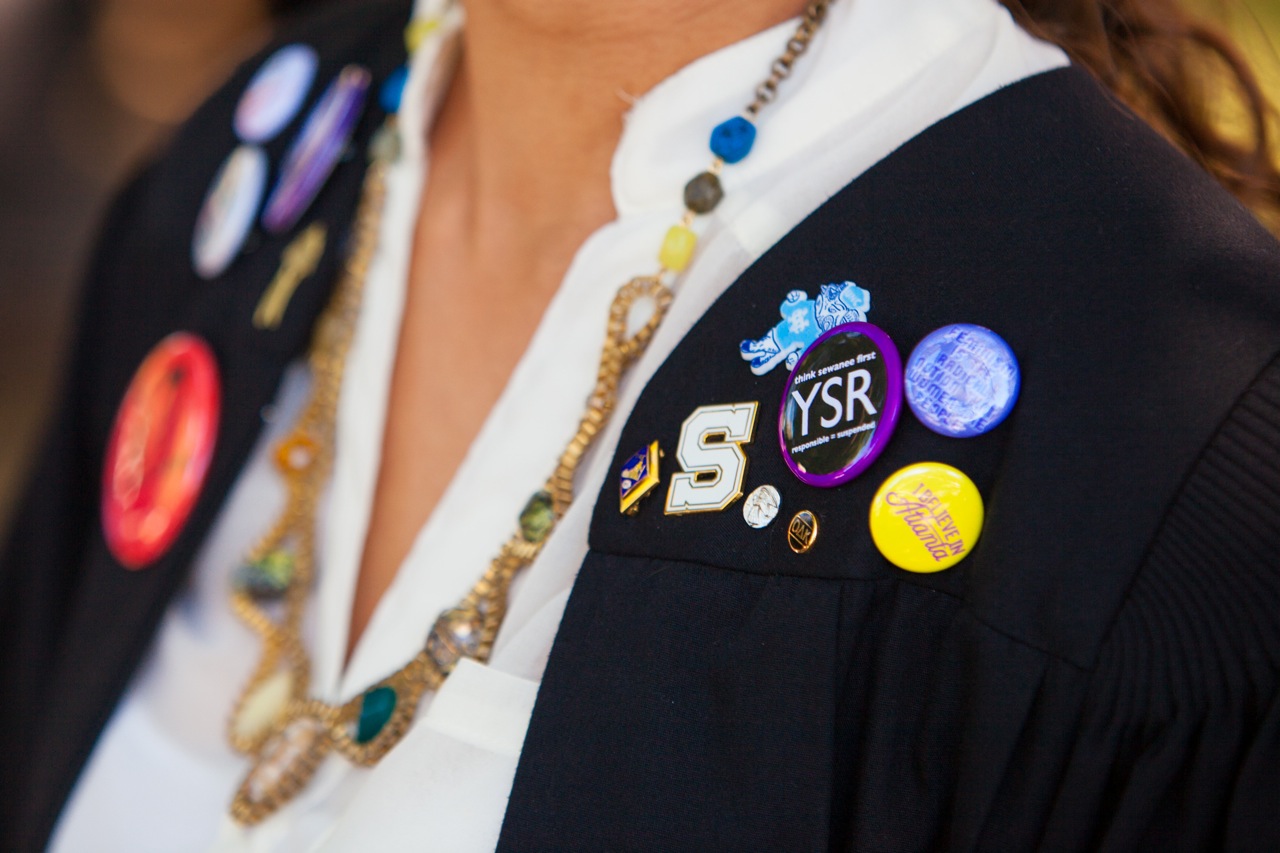The Rt. Rev. Jacob W. Owensby, bishop of the Episcopal Diocese of Western Louisiana offers his fourth book, A Resurrection Shaped Life: Dying and Rising on Planet Earth, as an introspection into our ordinary lives. Owensby presupposes that the resurrection of Jesus occurred as God’s definitive act of love. This “good news” is not just a static moment in time to be evangelized as an answer to what happens after we die, but rather an example of God’s love being poured into our day to day selves. By healing wounds and growing through our losses and sorrows, resurrection becomes a process of birthing the depths of God’s love from within one’s own sacred stories.
On March 6–7, the Beecken Center of the School of Theology will bring Owensby to Sewanee for a public lecture on Friday and an all-day workshop based on his book—what we mean by the resurrection, how to lean into the resurrection, and what a resurrection-shaped life looks like.
Drawing from the stories of his own childhood, Bishop Owensby retells the painful loss of his baby sister as well as growing up in an abusive household that ultimately led to homelessness. Living with a speech impediment from a cleft palate until his 20s, Owensby shares that his motivation for survival became a toxic and self-defeating path of seeking achievement and approval. “The more I achieved, the more miserable I became,” shares Owensby. “For me to grow into freedom, I needed to respond in a different way. I had to let go of resentment and bitterness, I had to die.”
Owensby poses the question of how do we live our life richly and boldly when we lose friends and family. How do we live with moral injury and trauma? How do we live in hope? Owensby answers “that it is God, who is at work in all of it.” It is here on Earth that God “takes me to a newer place.” Even when we fall on our face it is God who is there to brush us off and help us keep on walking.”
Owensby’s care and love of people and their stories inspires his work as pastor and author. Seeing all the “hurt that is around us” has given him a desire to write and lecture about the hope that is found in our personal resurrections. He states that “older narrower ways of existence will give way to broader ways of living.” He sees himself as a spiritual “mid-wife” assisting in birthing the experiences of our messy existence into the reality that God loves us no matter what. Influenced by the writings of Plato, this concept calls on the assurance that it is God’s divine image already dwelling deep within us. It is one’s work to birth this realization into being. This is in contrast to the belief that one has to accept God to have access to God.
Owensby states that “you weren’t born to be a final product, you were born into being your true self, an image of God.” For some, the image of God from within ourselves is born after the experience of brokenness and death. Owensby uses the example of the Japanese art form, Kintsugi, as a metaphor of our broken selves. In this art form, broken pottery is not thrown away or hidden, but mended with lacquer mixed with gold, silver or platinum. “Mended in a way that shows the value of the life that has been lived—a love bowl,” states Owensby.
Owensby reflects on the biblical story of the apostle Thomas after the resurrection of Jesus. “Thomas is the one who gets it. Calling him doubting Thomas is such a slur. It was Thomas who realized what Jesus was doing.” Revealing all the broken-hearted-ness that love brings is worth it, just as Jesus promised. “We are mended in a way that is even more beautiful than before.” Thomas saw the wounds not as proof of Jesus being resurrected but as glorious tokens of God’s love.
Owensby goes on to illustrate that our broken lives matter. “What God does when he raises Jesus from the dead and raises us from the various tombs that we fashion for ourselves, is the revelation that life matters.” From this epiphany—living on the Earth brings us into a response of generosity. Focus shifts from thoughts of “what happens to me when I die” to living a life of forgiving people who are not sorry, giving the shirt off your back, and loving our enemies. “God’s love is at work right here, right now,” states Owensby. He shares that we are the leaven transforming the world. Though we may not see world peace, by loving, hate does not have the last word. Poverty may not end in our lifetime, but Owensby states that we are the counter balance in the world and we are called to be world changers.
Owensby hopes that by bringing the memories and life stories from people to light, that one can begin a dialogue of understanding that we are God’s beloved. Through our theologies, creeds, and everyday experiences, we are reminded that there is an interior depth to resurrection. He hopes that people can interpret or think about resurrection in a new way— where repentance and forgiveness have no limits but rather leads one to ask “what is God asking here, what is God getting at?” Owensby does not want to download information or provide how-tos, but instead bring out the meaning of existential questions; engaging people where they are and helping them understand the “hang of living.” He encourages the work of learning to live with grief and understanding the meaning of suffering because, for Owensby, “Resurrection is real living, living with God saturating your life.”
